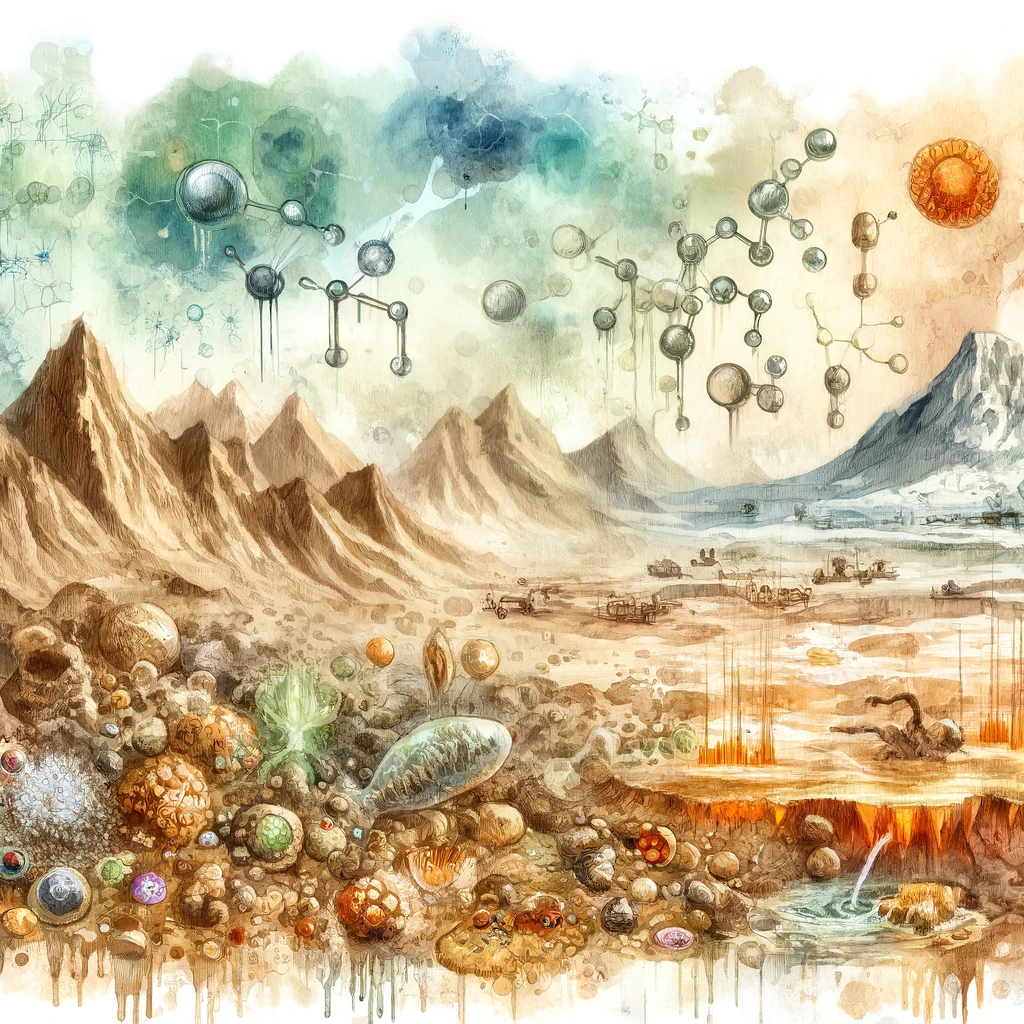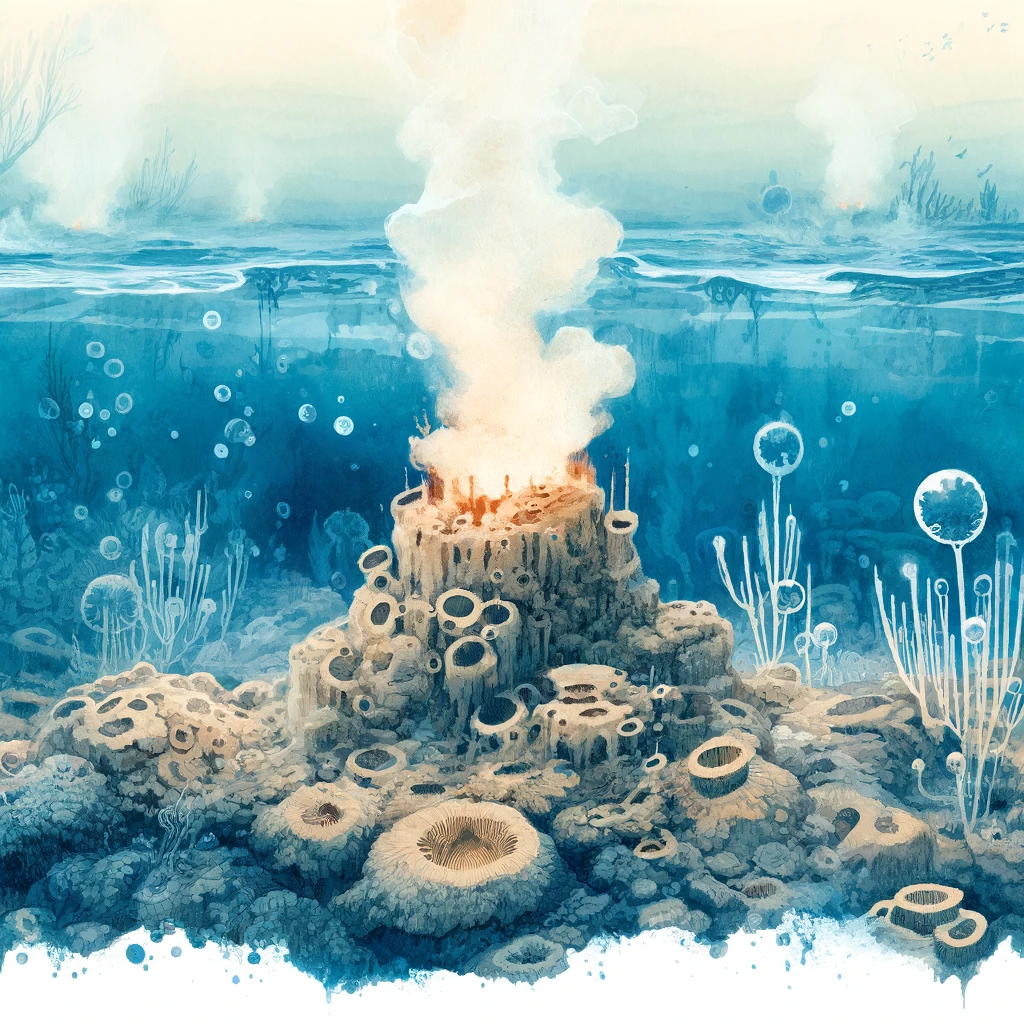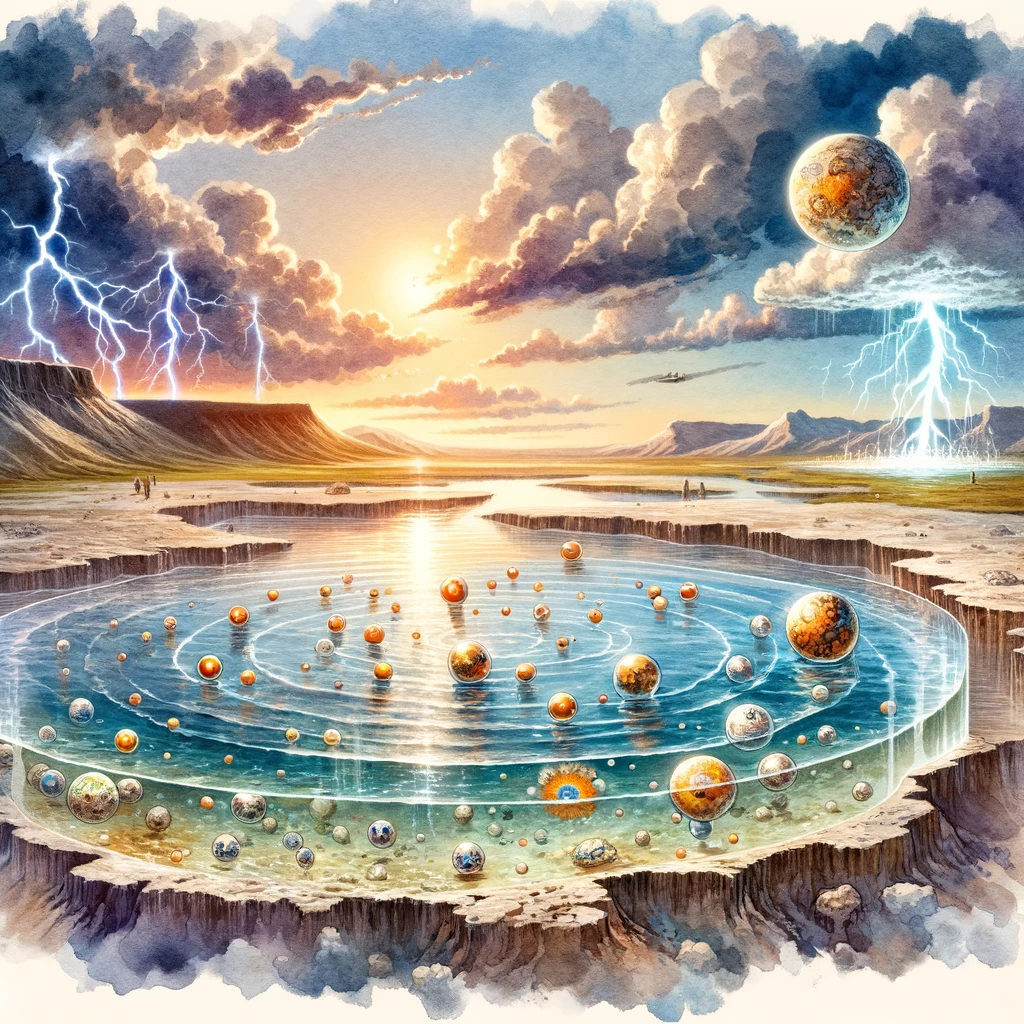Theories of the Origin of Life on Earth explore how life began on our planet, a subject that has fascinated scientists and philosophers for centuries. Various hypotheses attempt to explain this mystery, ranging from biological evolution to extraterrestrial origins. While no single theory has been universally accepted, the study of life’s origins continues to evolve with discoveries and insights.
- Theories of the Origin of Life on Earth include scientific, religious, and philosophical perspectives.
- Some theories suggest life began in Earth’s primordial soup, with organic molecules forming spontaneously.
- Some scientists propose that extraterrestrial sources like comets or meteorites brought life to Earth.

Analysis of Various Hypotheses
Testing of various hypotheses involves the testing of several hypothesized explanatory propositions regarding a phenomenon.
Primordial Soup Theory
The primordial soup theory- sometimes called the Oparin-Haldane hypothesis a theory that has stated that life began in a “soup” of organic molecules, perhaps in early Earth’s oceans. According to this theory, simple organic compounds resulted from chemical reactions fueled by energy sources such as ultraviolet radiation or lightning and gradually became more complex to finally form self-replicating molecules and the first primitive cells.
Most related experiments to this theory are the Miller-Urey experiment of 1953, which simulated the early Earth’s conditions that produced amino acids, basic constituents of proteins, from simple chemicals like methane, ammonia, and hydrogen.
Hydrothermal Vent Hypothesis
The hydrothermal vent hypothesis suggests that life originated at hydrothermal vents on the ocean floor, releasing hot water rich in minerals, which was warm enough to promote chemical reactions. High temperatures and pressures around these vents are assumed to have favored the synthesis of organic molecules leading to primitive forms of life.
Evidence supporting this theory includes the discovery of highly complex systems near modern hydrothermal vents. The life discovered there thrives without sunlight; it uses chemosynthesis to survive. Minerals and catalytic surfaces present at such vents may have been very instrumental in the chemical processes toward life.

Evaluation of the Evidence
Analysis of the evidence requires critical scrutiny of information and facts to reveal their reliability and relevance. This helps in drawing informed conclusions or either supporting or refuting hypotheses or claims.
Primordial Soup Theory
The Primordial Soup Theory says that life originated from an organic soup, which was present in the early oceans of Earth. As these compounds are energized by natural forces, then they led to producing simple forms of life.
Supporting Evidence
- Miller-Urey experiment: This experiment, among others, offered evidence for the synthesis of organic molecules in early Earth-like conditions.
- Abiotic synthesis: Thus, numerous experiments have been able to prove the synthesis of organic compounds under conditions close to that of the early Earth environment.
Problems
- Dilution problem: The oceans would probably have been too huge and hence the concentration of organic molecules was diluted, thus competing with the origin of life.
- Energy sources: The energy sources could not have been so regularly available and efficient to have chemical reactions.
Hydrothermal Vent Hypothesis
The Hydrothermal Vent Hypothesis suggests life began near deep-sea hydrothermal vents, as mineral-rich, heated water provided the kind of energy and condition to help generate the precursors to early life forms.
Evidence from Modern System
- Life in modern vent systems: Life forms seem to flourish in modern hydrothermal vent systems, yet analogous environments likely existed in the ancient past to provide life with its first haven.
- Mineral catalysis: The occurrence of minerals able to catalyze organic reactions favors the proposal of the origin of life within the vents.
Objections
- Strict conditions: These presuppositions relate exclusively to very strict conditions within hydrothermal vents, which further limits the possible origin-of-life sites.
- Ancient ocean chemistry: The chemistry of oceans at the early stages and the feasibility of the presence of appropriate compounds at those vents are still under investigation.

Analysis of Ongoing Research and Recent Findings
Beyond Earth Search for the Origin of Life Extends into Astrobiology and the Quest to Discover Life Outside Earth. Continued Research and New Findings are still Modifying Our Understanding
Astrobiology and Extraterrestrial Life
Mission NASA’s Perseverance rover on Mars are looking for ancient evidence of life by examining the geology of the planet and the search for organic molecules. On Earth, research into how life thrives in extreme environments, such as super-saline deep-sea vents and acidic lakes, informs scientists as to whether or not life elsewhere in the universe could possibly exist under similar conditions.
RNA World Hypothesis
Some scientists have hypothesized that RNA, the molecule that can both store genetic information and catalyze chemical reactions, was an important intermediate in the origin of life. Evidence supports that RNA molecules can spontaneously form under prebiotic conditions.
Panspermia Hypothesis
This is the hypothesis that life, at least precursors to life, originated elsewhere in space and came to Earth on comets or meteorites. Scientists have found organic compounds in meteorites and confirmed this theory through their analysis.
Laboratory Studies
Advances in synthetic biology and lab simulations continue to explore the chemical pathways that may lead to the origin of life. Researchers continue experimenting with simulations of early Earth conditions while producing life-like systems from simple molecules.
Implications for understanding the origins of life
The more we understand how life first arose, the more information we have not only about our beginnings but also about the search for life beyond Earth. The variety of hypotheses points to a problem of considerable complexity that demands an interdisciplinary approach from chemistry and biology to geology and astronomy. It may even teach us how life on Earth began, giving clues as to where to look for more in other planets and moons in the future and in extraterrestrial intelligence.
Conclusion
As much as the primordial soup theory and hydrothermal vent hypothesis make great stories for themselves as they stand, the true origin of life on Earth must rankle as one of the greatest scientific mysteries in existence. Through continually evolving research and discovery, these theories are gradually being built upon. And sculpted together to lead us closer to the age-old question of how life began.
| Theories of the Origin of Life on Earth UPSC Notes |
| 1. Theories on the origin of life explore how life began on Earth from simple organic molecules over billions of years. 2. Abiogenesis suggests life arose naturally from non-living matter through chemical processes in Earth’s early atmosphere and oceans. 3. The Primordial Soup Theory posits that early Earth had a mix of organic molecules that eventually formed complex life forms. 4. Panspermia Theory proposes that life originated elsewhere in the universe and was carried to Earth by meteoroids or comets. 5. The Miller-Urey Experiment simulated early Earth conditions, demonstrating that organic molecules could be formed from inorganic components. 6. The RNA World Hypothesis suggests RNA, capable of storing genetic information and catalyzing reactions, played a key role in the origin of life. 7. The Deep-Sea Vent Hypothesis argues that life may have originated around hydrothermal vents, where extreme conditions promoted the formation of life. 8. Modern studies continue to explore various theories, aiming to understand how life transitioned from simple organic molecules to complex organisms. |


